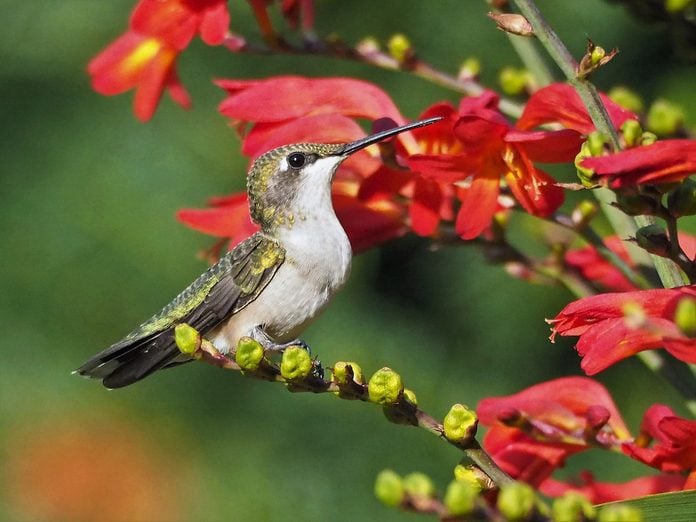
Types of Hummingbirds
Identifying the types of hummingbirds that feed in your yard can be both fun and frustrating. Sometimes it’s simple, but in some places distinguishing between species be downright challenging. Much depends on location, location, location. To learn more, check out The Hummingbird Handbook: Everything You Need to Know About These Fascinating Birds, published by Timber Press.
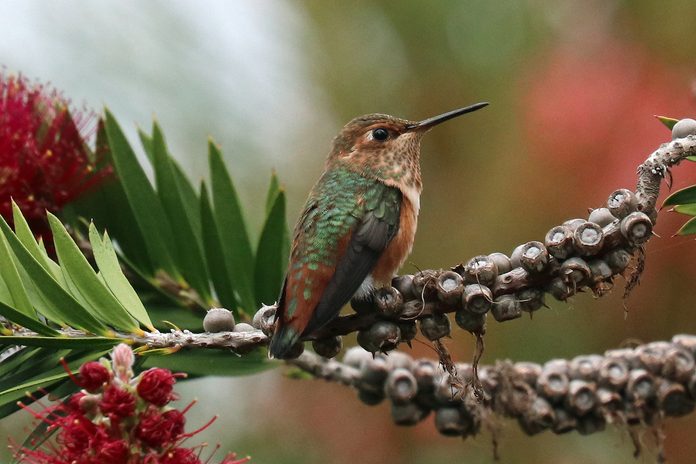
Allen’s Hummingbird
No disrespect to the California quail, but I think the Allen’s hummingbird would have made a fine choice for the official state bird of California because, other than a tiny length of coastline in bordering southwestern Oregon, the Golden State comprises the entire breeding range of this energetic, tiny hummingbird. The two subspecies of Allen’s hummer are essentially identical. As its name suggests, subsp. sedentarius is nonmigratory from its range in southern California, while the more northerly and widespread type, subsp. sasin, winters in Mexico. Check out common questions about hummingbird feeders answered by experts.
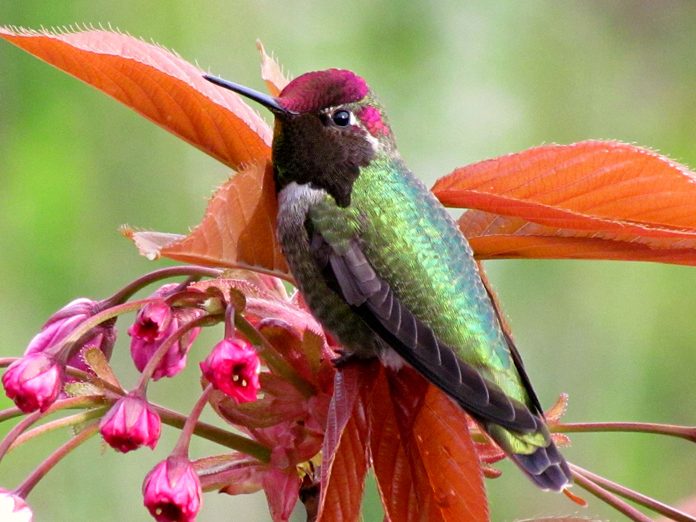
Anna’s Hummingbird
Only in recent decades has the Anna’s hummingbird become the most abundant type of hummingbird of the Pacific states. Moreover, it is the only type of hummingbird that remains year-round in the Northwest. This colorful recent arrival has greatly expanded its breeding range, which was once limited to the mountains of southern and central California. So new to the Northwest is the Anna’s hummingbird that it has not had time to evolve a migration pattern southward for winter; so it simply stays put, adapting to Northwest winters. The male Anna’s hummer is one of the singing species, proudly belting out his screechy courtship song at any time of year. The male Anna’s can beam like a colorful flashlight when the bird turns its head to the right angle to catch the light. Psst—Learn how hummingbirds can fly backwards.
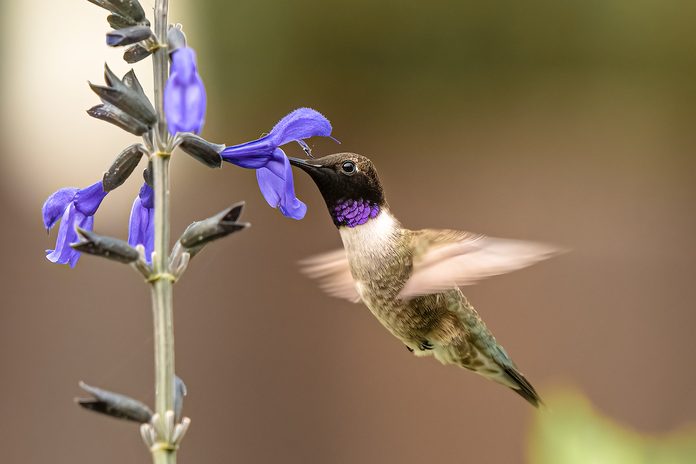
Black-Chinned Hummingbird
In the same genus as the ruby-throated hummingbird that breeds in the eastern half of the United States, the intriguing black-chinned hummingbird is a species at home in various habitats of the West. The male’s mostly black throat gives this species its common name, but just the right turn of the head, in the proper light, startlingly reveals a narrow, rich blue-violet gorget bordering the black. Black-chinned hummers are tail waggers—their tail is almost always twitching when they hover to feed, a behavior that can help distinguish females from similar species. Learn about the life of a female hummingbird.
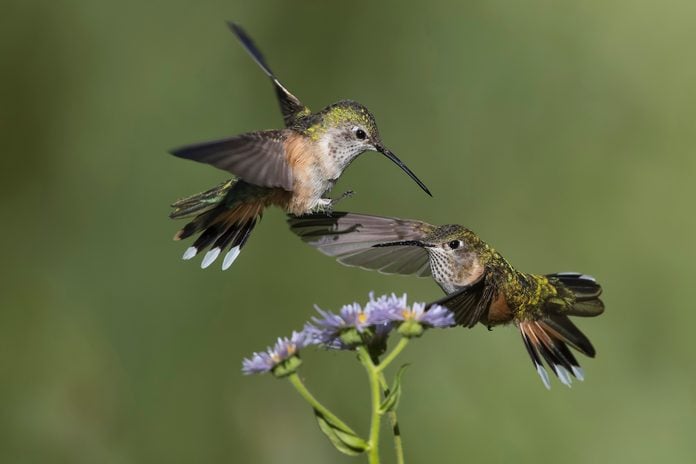
Broad-Tailed Hummingbird
The common hummingbird of the central Rockies, the broad-tailed hummingbird reaches the northern extent of its breeding range in the mountains of southwestern Montana, eastern and central Idaho, and possibly far eastern or southeastern Oregon. Broad-tailed hummers are the most common type of hummingbird in Colorado. During summer, they are easy to find around feeders and areas of good habitat in many of the state’s mountain towns. They breed and nest at high elevations, even above 10,000 feet. Thanks to the shape of its outer primary flight feathers, the male can produce a rapid, insectlike trill, which it uses during courtship display dives and during chase flights. Check out more jaw-dropping facts about hummingbirds.
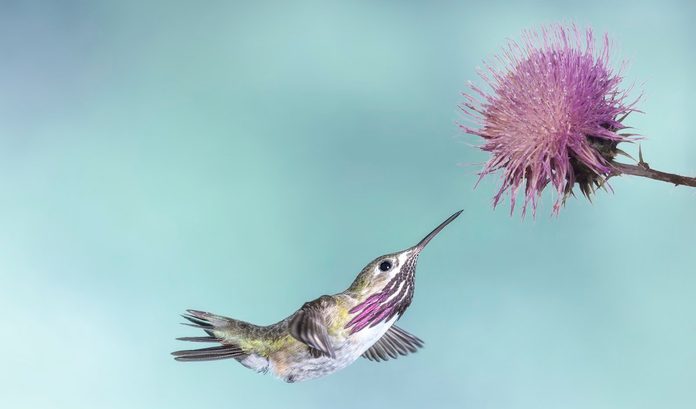
Calliope Hummingbird
The smallest bird breeding north of Mexico in North America, the dainty calliope hummingbird is a mountain specialist, breeding as high as timberline from the Sierra Nevada and Cascade crest to the Rockies. When subalpine meadows burst into colorful bloom, look for these unobtrusive little hummers hover-feeding at wildflowers that may not grow more than a few inches high. They are among the long-distance migrators, their annual path taking them as far north as the Canadian Rockies of central British Columbia from their wintering grounds on the Pacific side of central and southern Mexico. In fact, this circuitous journey, which can reach 5,000 miles for some individuals, makes the calliope hummer the world’s smallest long-distance migratory bird. Check out the top 10 colorful flowers hummingbirds love.
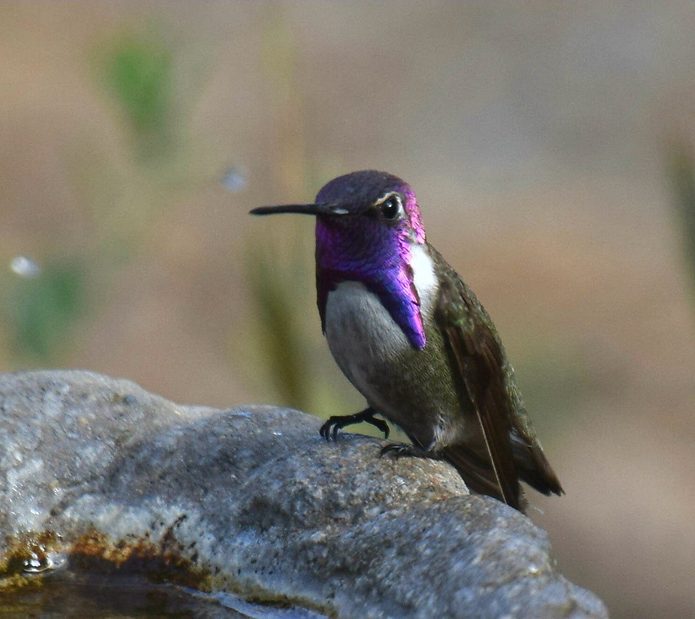
Costa’s Hummingbird
The striking male Costa’s hummingbird is unmistakable. But the female is difficult to distinguish from females of other species, especially Anna’s and black-chinned hummers. The adult male sports a brilliant royal purple crown and gorget, which envelops the face and base of the bill, and forms a long, pointed “mustache.” This makes him one of the most photogenic types of hummingbirds in North America. Though Sonoran desert scrub is the Costa’s natural habitat, vagrants appear annually in the San Francisco Bay area and almost annually from northern California to British Columbia. Psst—we found 21 stunning hummingbird photos you need to see.
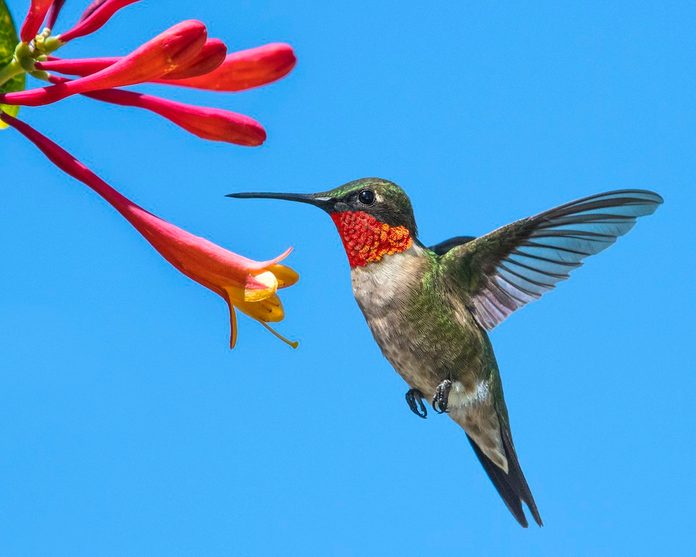
Ruby-Throated Hummingbird
The ruby-throated hummingbird is the only common type of hummingbird in the eastern half of the continent, and the only breeding species throughout most of its range. Unlike western hummingbirds, ruby-throats tend not to swarm feeders and flowers except in certain places during migration. The ruby-throated hummer is also one of the most intensely studied species. Migration studies have confirmed that many ruby-throats fly across the Gulf of Mexico in transit between the United States and wintering grounds in Mexico and Central America. Staging in the Gulf Coast states in late summer, they add weight from extensive feeding and then undertake the 500-plus-mile nonstop journey over the Gulf. They repeat this amazing flight on the return journey north in the spring. Learn about the ruby-throated hummingbird range.
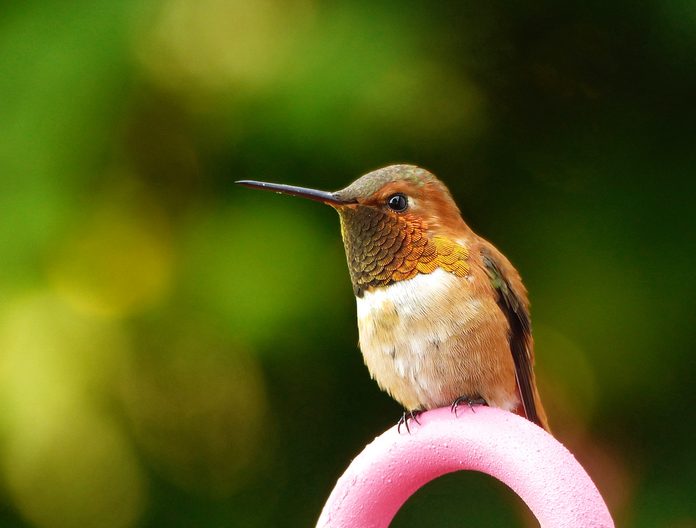
Rufous Hummingbird
The ubiquitous rufous hummingbird is the long-distance champion of the hummingbird world. They breed as far north as southeast Alaska and wintering in Mexico, and perhaps as far south as Panama, and along the Gulf Coast of the United States. During spring, rufous hummingbirds largely migrate northward west of the Rockies, and then return south through the same mountains. The migration paths of southern breeding populations, from northernmost California and western Oregon, are less well understood. Because of their flyway down the Rockies and southeasterly toward the Gulf of Mexico, rufous hummers tend to stray widely—much to the delight of eastern birdwatchers. Males are rusty-orange overall, with a white breast band above a buff-white belly and an orange gorget.
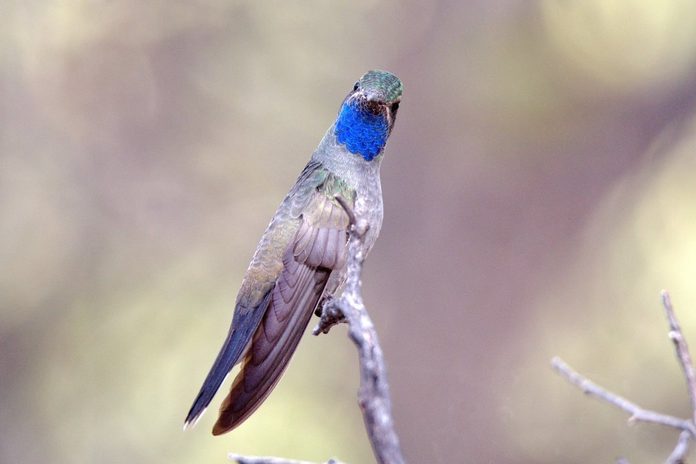
Blue-Throated Mountain Gem
The comparatively robust blue-throated mountain-gem (aka blue-throated hummingbird) is the largest hummer species north of Mexico. It weighs in at up to nearly 9 grams—or a bit more than a stack of three pennies. The Rivoli’s hummingbird is nearly as large. Both species have comparatively low hovering wingbeat rates—about 23 beats per second. The blue-throated mountain-gem, whose U.S. breeding range is limited to the deep Southwest, is one of the most habitat-specific hummers in the country. It shows a strong preference for riparian zones flush with maple and/or sycamore. In such places, the male’s distinctive seep calls are often the first sign of its presence. But blue-throated mountain-gems also use a wide array of other sounds, depending on the situation. Learn how hummingbirds use their tongues and beaks.
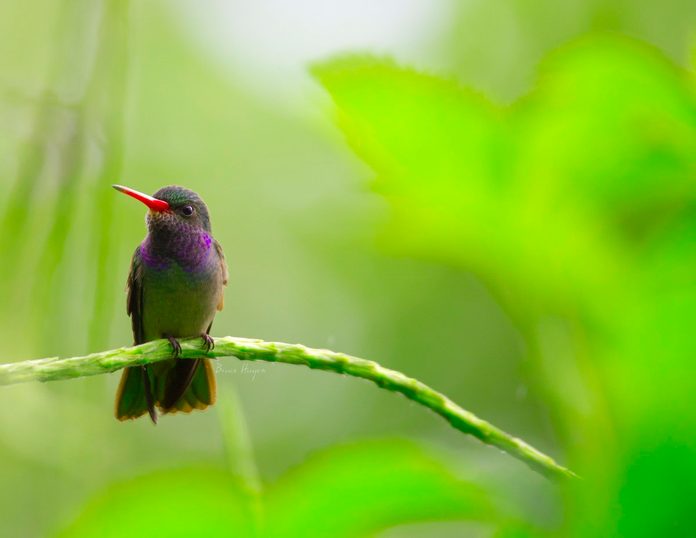
Broad-Billed Hummingbird
Colorfully iridescent virtually head to toe, the kaleidoscopic little male broad-billed hummingbird is one of the most striking types of hummingbirds in North America. The broad-billed hummer is generally easy to find at the popular hummingbird hotspots in southern Arizona, where the appearance of a sparkling male in good light elicits awe and ahhhs from onlookers. In poor light, like the Rivoli’s hummingbird, he appears all dark, but he is substantially smaller than the Rivoli’s and his bill is red rather than black.
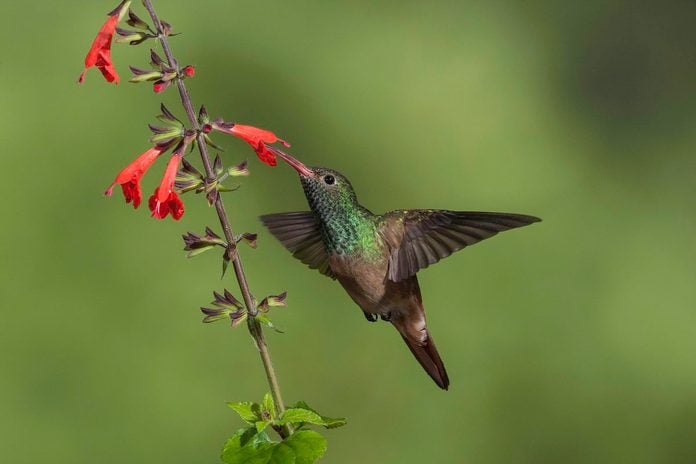
Buff-Bellied Hummingbird
Though not numerous in the United States, these bedazzling green-and-cinnamon hummers are increasingly regular winter visitors. Their overall range virtually encircles the Gulf of Mexico. Look for them from the Caribbean coast of the Yucatan Peninsula, up along the Mexican Gulf slope, and then through coastal Texas and Louisiana. They breed as far north as southernmost Texas. But for some reason then expand their range in winter, rather than largely retreating southward like other species. The buff-bellied hummingbird is common from March through July and August in southern and coastal Texas. Apparently individuals wander northward in late summer and fall after breeding. Learn how to keep bees and wasps away from hummingbird feeders.
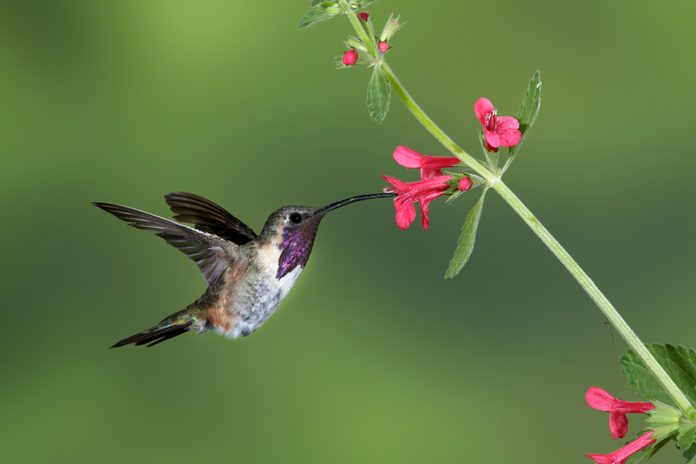
Lucifer Hummingbird
In the United States, the Lucifer hummingbird is found in only a few places in the deep Southwest. There it is a desert specialist, residing in dry, brushy canyons and arroyos, such as those incising the sky island mountains. In the Chisos Mountains of Texas, where their range and habitat overlap, Lucifers are frequently dominated by black-chinned hummers in defense of Havard’s century plant. The male’s gorget is brilliant purple-magenta, largely framed by a white breast and white stripe trailing down the sides of the neck from the eyes. Check out the top 10 red flowers that attract hummingbirds.
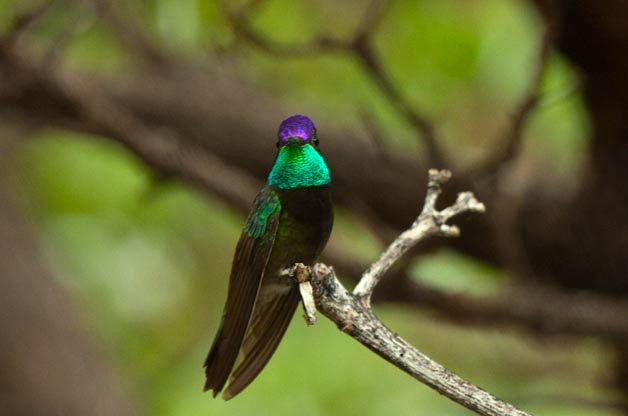
Rivoli’s Hummingbird
The former common name for this species, magnificent hummingbird, seemed perfectly appropriate for a large, striking hummingbird that reaches the northernmost extent of its range in the American Southwest. But in 2017, the American Ornithological Society split the magnificent hummingbird into the talamanca hummingbird of Costa Rica and western Panama, and the Rivoli’s hummingbird, which ranges from northern Nicaragua to the southwesternmost United States. Both sexes are fairly and long, robust with an all-black bill. The male has a black breast and emerald-green gorget that separates it from all other U.S. hummers. Also look for a brilliant purplish crown. Learn how long hummingbirds live.
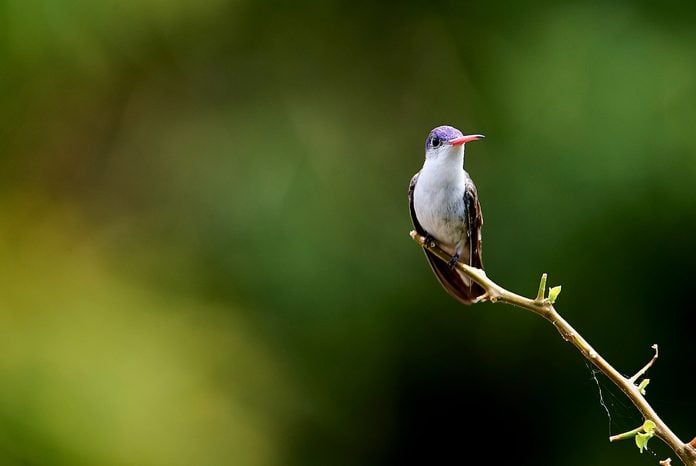
Violet-Crowned Hummingbird
Unlike the other types of hummingbirds that breed in the United States, male and female violet-crowned hummingbirds are identical. There is no way to differentiate between them in the field. They are also easy to separate from all other hummers in North America because of their bright white underparts and black-tipped red bill. The violet-crowned hummer is primarily a Mexican species. But its breeding range extends to southeastern Arizona and adjacent New Mexico. The prevalence of feeders maintained by humans in well-known hummer locations within this region have increasingly encouraged this species to overwinter. Moreover, in the 20th century, the violet-crowned hummer expanded its range northward into Arizona and New Mexico. Only a few sightings were recorded prior to the 1960s. Learn where hummingbirds sleep at night.
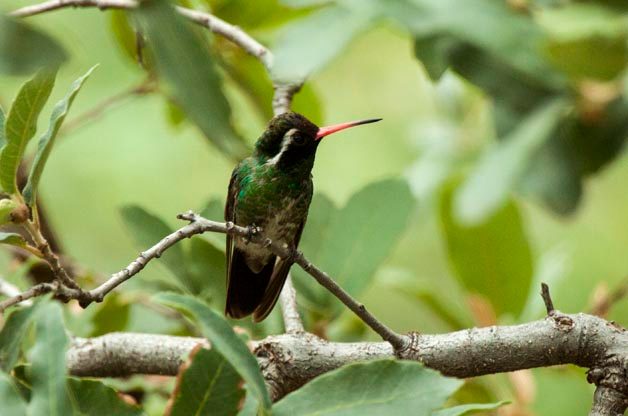
White-Eared Hummingbird
The white-eared hummingbird is a common type of hummingbird in most of its Mexican and Central American range. But in the United States, it occurs regularly only in southern Arizona. When in 1996 the Arizona Bird Committee reported a confirmed nest, they called the white-eared a “rare but regular” summer visitor to southeastern canyons, particularly Ramsey, Carr, Cave Creek, and Madera, restricted to oak or pine zones at elevations of at least 5,000 feet. The best hope for enthusiasts to see a white-eared hummer is to monitor eBird reports from the key sites in Arizona and be ready to hop on a plane, so to speak. When a white-eared hummingbird shows up at these locations, it tends to hang around for a while. Males have a bluish purple face, a black-tipped red bill, a black crown and black eye patches, with white stripes trailing down nearly to the shoulders.
Next, check out the best gifts for hummingbird lovers.
